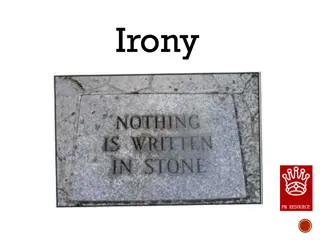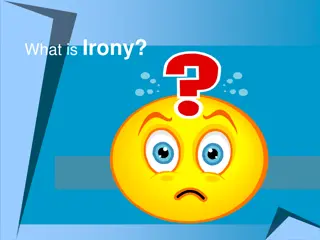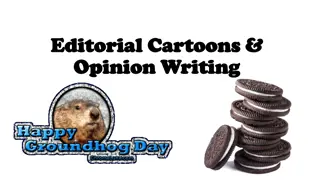Understanding Political Cartoons: Symbols, Metaphors, and Irony
Political cartoons are historical snapshots that use visual symbols, metaphors, and irony to reflect public sentiments and critique current events. Through visual distortion, stereotypes, and caricature, these cartoons offer insights into culture and attitudes, aiming to provoke thoughtful discourse on contemporary issues.
Download Presentation

Please find below an Image/Link to download the presentation.
The content on the website is provided AS IS for your information and personal use only. It may not be sold, licensed, or shared on other websites without obtaining consent from the author. Download presentation by click this link. If you encounter any issues during the download, it is possible that the publisher has removed the file from their server.
E N D
Presentation Transcript
Political Cartoons Began in the 18thCentury Use pictures and few words Give insight to the public mood, culture, or attitude Often about key events or trends of the time
Visual Symbols and Metaphors O Images stand for some other thing, event, person, idea or trend in the news. A dollar sign ($) may stand for the entire economy. An octopus may stand for a powerful corporation with tentacles controlling many other institutions.
O Metaphors are like symbols that describe one thing as something else entirely. What does the cow represent? Who is this person? What do the buckets represent?
Visual Distortion O Changes or exaggerations in size, shape, emotions, or gestures often add extra meaning to the symbols the cartoon includes.
Irony in Words and Images is said in a way that mocks its own meaning. O Irony is a form of humor in which something Often, an amusing image undercuts and reverses the meaning of the words in a caption. Sometimes, the image alone conveys a double meaning.
Stereotypes and Caricature O Caricature is the opposite of a stereotype. A stereotype oversimplifies a group. Often stereotypes are insulting. Caricature is an exaggerated or distorted drawing of an individual highlighting what the artist sees as most unique about that individual.
Uses and Misuses O Editorial cartoons may be funny, outrageous, even insulting. Yet, the aim is to provoke thought about issues in the news. O Political cartoons always represent points of view that can be challenged.
An Argument not a Slogan O Slogans sell something. (An apple a day keeps the doctor away.) A good editorial cartoon invites you to consider its argument or reasoning. It presents reasons to support its view. Although it may be biased, the cartoon gives grounds for responding and arguing back.
O Describe the action that is taking place. O What is the purpose of the cartoon? What is its message? Is it effective? O Who is the intended audience? O Whose viewpoint does it represent?
O Describe the action that is taking place. O What is the purpose of the cartoon? What is its message? Is it effective? O Who is the intended audience? O Whose viewpoint does it represent?
O Describe the action that is taking place. O What is the purpose of the cartoon? What is its message? Is it effective? O Who is the intended audience? O Whose viewpoint does it represent?
O Describe the action that is taking place. O What is the purpose of the cartoon? What is its message? Is it effective? O Who is the intended audience? O Whose viewpoint does it represent?
Resources: O Interpreting Political Cartoons in the History Classroom . Teaching History.org Interpreting Political Cartoons in the History Classroom. http://teachinghistory.org/teaching- materials/teaching-guides/21733. 7 May 2014.























